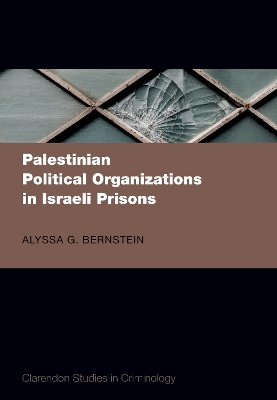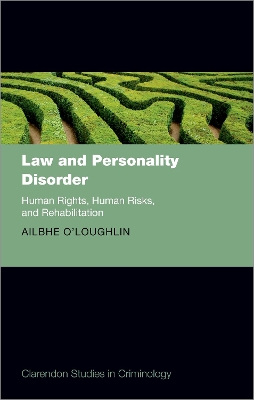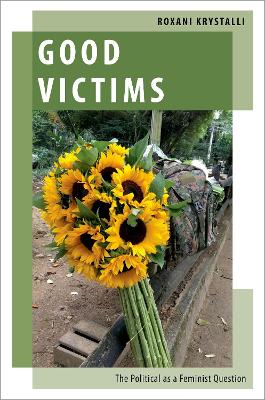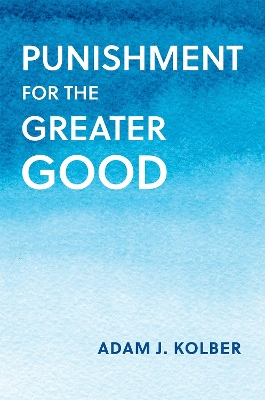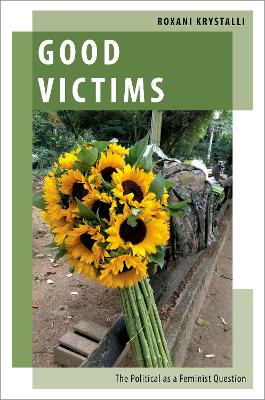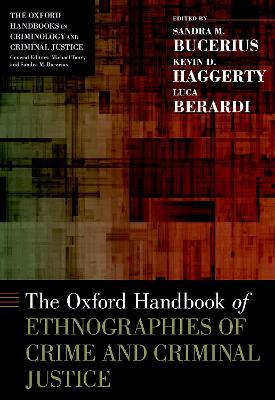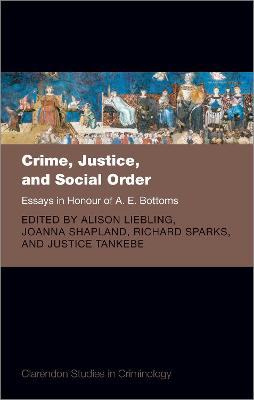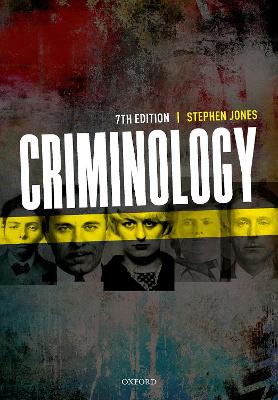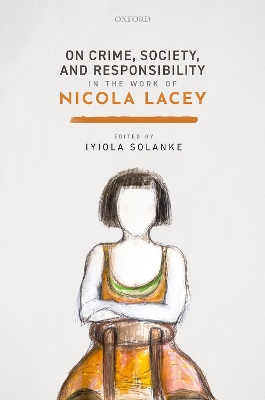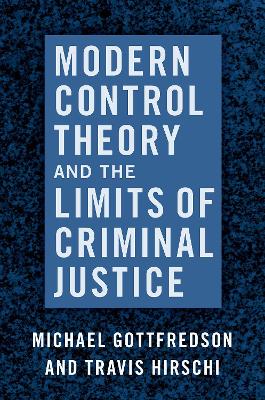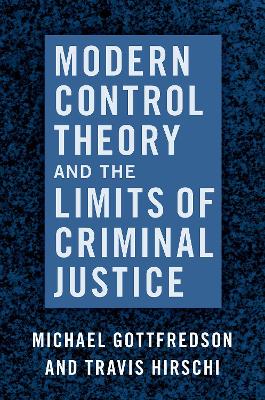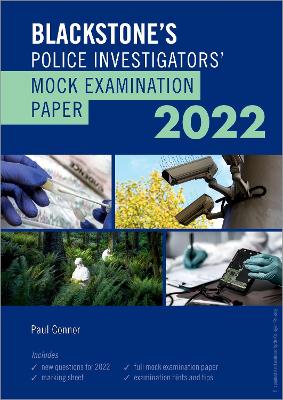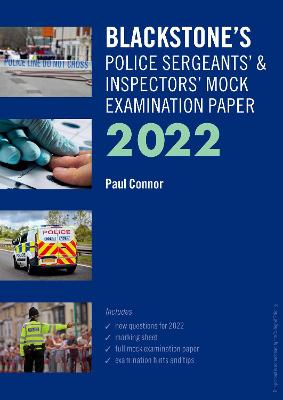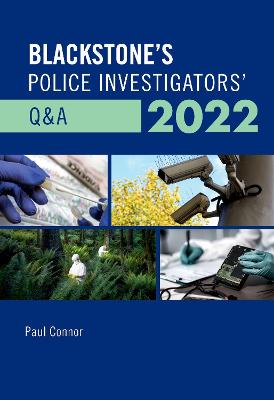Vold's Theoretical Criminology
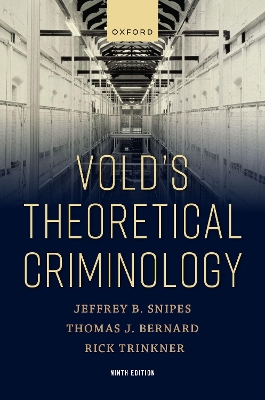 -10%
portes grátis
-10%
portes grátis
Vold's Theoretical Criminology
Trinkner, Rick; Bernard, Thomas; Snipes, Dr. Jeffrey
Oxford University Press Inc
03/2024
488
Mole
9780197750438
15 a 20 dias
Chapter 1: Theory and Crime
1.1 Spiritual Explanations
1.2 Natural Explanations
1.3 Scientific Theories
1.4 Causation in Scientific Theories
1.5 Three Categories of Criminological Theories
Conclusions
Key Terms
Discussion Questions
Chapter 2: Classical Criminology
2.1 The Social and Intellectual Background of Classical Criminology
2.2 Beccaria and the Classical School
2.3 The Neoclassical School
2.4 From Classical Theory to Deterrence Research
2.5 Nagin's Review of Deterrence Research
2.6 Rational Choice and Crime Prevention Through Environmental Design (CPTED)
2.7 Routine Activities and Victimization
2.8 Focused Deterrence: Operation Ceasefire
Conclusions
Key Terms
Discussion Questions
Chapter 3: Bioscocial Criminology
3.1 Background: Physical Appearance And Defectiveness
3.2 Lombroso, the Born Criminal, and Positivist Criminology
3.3 Goring's Refutation of the Born Criminal
3.4 Body Type Theories
3.5 Family Studies
3.6 Twin and Adoption Studies
3.7 Epigenetics and the Role of Heritability Studies in Biosocial Criminology
3.8 MAOA: The Warrior Gene
3.9 Hormones
3.10 The Neural Basis of Crime
3.11 Environmentally Induced Biological Components of Behavior
Conclusions
Key Terms
Discussion Questions
Chapter 4: Psychological Factors and Criminal Behavior
4.1 Intelligence and Crime: Background Ideas and Concepts
4.2 IQ Tests and Criminal Behavior
4.3 Delinquency, Race, and IQ
4.4 Interpreting the Association Between Delinquency and IQ
4.5 Personality and Criminal Behavior: An Overview
4.6 Sigmund Freud and Psychoanalysis
4.7 Psychopathy and Antisocial Personality Disorder
4.8 Depression and Delinquency
4.9 Trait Perspectives & the Five Factor Model of Personality
4.10 Impulsivity and Crime
4.11 Moffitt's Life-Course-Persistent Offenders
4.12 Clinical Prediction of Future Dangerousness
4.13 Actuarial Prediction of Later Crime and Delinquency
4.14 Policy Implications of Personality Research
Conclusions
Key Terms
Discussion Questions
Chapter 5: Durkheim, Anomie, and Modernization
5.1 Emile Durkheim
5.2 Crime as Normal in Mechanical Societies
5.3 Anomie as a Pathological State in Organic Societies
5.4 Durkheim's Theory of Crime
Conclusions
Key Terms
Discussion Questions
Chapter 6: Strain Theories
6.1 Robert K. Merton and Anomie in American Society
6.2 Cohen's Middle Class Measuring Rod
6.3 Cloward and Ohlin's Typology of Gangs
6.4 1960s Strain-Based Policies
6.5 The Decline and Resurgence of Strain Theories
6.6 Agnew's General Strain Theory
6.7 Messner and Rosenfeld's Institutional Anomie Theory
Conclusions
Key Terms
Discussion Questions
Chapter 7: Neighborhoods and Crime
7.1 The Theory of Human Ecology
7.2 Research in The Delinquency Areas of Chicago
7.3 Policy Implications
7.4 Residential Succession, Social Disorganization, and Crime
7.5 Sampson's Theory of Collective Efficacy
7.6 Neighborhood Disorder, Crime, & Policing
7.7 Crime in Public Housing
7.8 Social Disorganization and Crime in Rural Areas
7.9 Expanding Interest in Neighborhood Social Processes
Conclusions
Key Terms
Discussion Questions
Chapter 8: Learning Theories
8.1 Basic Psychological Approaches to Learning
8.2 Tarde's Laws of Imitation and Bandura's Social Learning Theory
8.3 Sutherland's Differential Association Theory
8.4 Research Testing Sutherland's Theory
8.5 The Content of Learning: Cultural and Subcultural Theories
8.6 The Learning Process: Akers's Social Learning Theory
8.7 Assessing Social Learning Theory
8.8 Athens's Theory of Violentization
8.9 Katz's Seductions of Crime
8.10 Labeling Theories
8.11 Implications
Conclusions
Key Terms
Discussion Questions
Chapter 9: Control Theories
9.1 Early Control Theories: Reiss to Nye
9.2 Matza's Delinquency and Drift
9.3 Hirschi's Social Control Theory
9.4 Assessing Social Control Theory
9.5 Gottfredson and Hirschi's A General Theory of Crime
9.6 Assessing Gottfredson and Hirschi's General Theory
Conclusions
Key Terms
Discussion Questions
Chapter 10: Conflict Criminology
10.1 Early Conflict Theories: Sellin and Vold
10.2 Conflict Theories in A Time of Conflict: Turk, Quinney, And Chambliss and Seidman
10.3 Black's Theory of The Behavior of Law
10.4 A Unified Conflict Theory of Crime
10.5 Minority Threat Theory
10.6 Cumulative Disadvantage in The American Criminal Justice System
Conclusions
Key Terms
Discussion Questions
Chapter 11: Marxist, Postmodern, and Green Criminology
11.1 Overview of Marx's Theory
11.2 Marx on Crime, Criminal Law, and Criminal Justice
11.3 The Emergence of Marxist Criminology
11.4 Marxist Theory and Research on Crime
11.5 Overview of Postmodernism
11.6 Postmodern Criminology
11.7 Green Criminology
Conclusions
Key Terms
Discussion Questions
Chapter 12: Gender and Crime
12.1 The Development of Feminist Criminology
12.2 Schools of Feminist Criminology
12.3 Gender in Criminology
12.4 Why Are Women's Crime Rates So Low?
12.5 Why Are Men's Crime Rates So High?
12.6 The Narrowing of The Gender Gap in Violence
12.7 Beyond the Gender Gap
Conclusions
Key Terms
Discussion Questions
Chapter 13: Developmental and Life-Course Theories
13.1 The Great Debate: Criminal Careers, Longitudinal Research, and the Relationship Between Age and Crime
13.2 Criminal Propensity Versus Criminal Career
13.3 The Transition to Developmental Criminology
13.4 Three Developmental Directions
13.5 New Directions in Developmental and Life-Course Criminology
Conclusions
Key Terms
Discussion Questions
Chapter 14: Integrated Theories
14.1 Elliott's Integrated Theory of Delinquency and Drug Use
14.2 The Falsification Versus Integration Debate
14.3 Braithwaite's Theory of Reintegrative Shaming
14.4 Tittle's Control Balance Theory
14.5 Differential Coercion and Social Support Theory
14.6 Bernard and Snipes's Approach to Integrating Criminology Theories
14.7 Agnew's General Theory
14.8 Gottschalk's Theory of Convenience
Conclusions
Key Terms
Discussion Questions
Chapter 15: Theory and Policy in Context
15.1 Crime in the United States: The Past Half-Century
15.2 Two Opposing Narratives of the Crime Wave
15.3 Explaining the 1990s Decline
15.4 The City That Became Safe
15.5 Crime in the U.S. During the Pandemic
Conclusions
Key Terms
Discussion Questions
Conclusion
What is the State of Criminological Theory?
How Should Theory Be Most Relevant to Policy?
Index
Chapter 1: Theory and Crime
1.1 Spiritual Explanations
1.2 Natural Explanations
1.3 Scientific Theories
1.4 Causation in Scientific Theories
1.5 Three Categories of Criminological Theories
Conclusions
Key Terms
Discussion Questions
Chapter 2: Classical Criminology
2.1 The Social and Intellectual Background of Classical Criminology
2.2 Beccaria and the Classical School
2.3 The Neoclassical School
2.4 From Classical Theory to Deterrence Research
2.5 Nagin's Review of Deterrence Research
2.6 Rational Choice and Crime Prevention Through Environmental Design (CPTED)
2.7 Routine Activities and Victimization
2.8 Focused Deterrence: Operation Ceasefire
Conclusions
Key Terms
Discussion Questions
Chapter 3: Bioscocial Criminology
3.1 Background: Physical Appearance And Defectiveness
3.2 Lombroso, the Born Criminal, and Positivist Criminology
3.3 Goring's Refutation of the Born Criminal
3.4 Body Type Theories
3.5 Family Studies
3.6 Twin and Adoption Studies
3.7 Epigenetics and the Role of Heritability Studies in Biosocial Criminology
3.8 MAOA: The Warrior Gene
3.9 Hormones
3.10 The Neural Basis of Crime
3.11 Environmentally Induced Biological Components of Behavior
Conclusions
Key Terms
Discussion Questions
Chapter 4: Psychological Factors and Criminal Behavior
4.1 Intelligence and Crime: Background Ideas and Concepts
4.2 IQ Tests and Criminal Behavior
4.3 Delinquency, Race, and IQ
4.4 Interpreting the Association Between Delinquency and IQ
4.5 Personality and Criminal Behavior: An Overview
4.6 Sigmund Freud and Psychoanalysis
4.7 Psychopathy and Antisocial Personality Disorder
4.8 Depression and Delinquency
4.9 Trait Perspectives & the Five Factor Model of Personality
4.10 Impulsivity and Crime
4.11 Moffitt's Life-Course-Persistent Offenders
4.12 Clinical Prediction of Future Dangerousness
4.13 Actuarial Prediction of Later Crime and Delinquency
4.14 Policy Implications of Personality Research
Conclusions
Key Terms
Discussion Questions
Chapter 5: Durkheim, Anomie, and Modernization
5.1 Emile Durkheim
5.2 Crime as Normal in Mechanical Societies
5.3 Anomie as a Pathological State in Organic Societies
5.4 Durkheim's Theory of Crime
Conclusions
Key Terms
Discussion Questions
Chapter 6: Strain Theories
6.1 Robert K. Merton and Anomie in American Society
6.2 Cohen's Middle Class Measuring Rod
6.3 Cloward and Ohlin's Typology of Gangs
6.4 1960s Strain-Based Policies
6.5 The Decline and Resurgence of Strain Theories
6.6 Agnew's General Strain Theory
6.7 Messner and Rosenfeld's Institutional Anomie Theory
Conclusions
Key Terms
Discussion Questions
Chapter 7: Neighborhoods and Crime
7.1 The Theory of Human Ecology
7.2 Research in The Delinquency Areas of Chicago
7.3 Policy Implications
7.4 Residential Succession, Social Disorganization, and Crime
7.5 Sampson's Theory of Collective Efficacy
7.6 Neighborhood Disorder, Crime, & Policing
7.7 Crime in Public Housing
7.8 Social Disorganization and Crime in Rural Areas
7.9 Expanding Interest in Neighborhood Social Processes
Conclusions
Key Terms
Discussion Questions
Chapter 8: Learning Theories
8.1 Basic Psychological Approaches to Learning
8.2 Tarde's Laws of Imitation and Bandura's Social Learning Theory
8.3 Sutherland's Differential Association Theory
8.4 Research Testing Sutherland's Theory
8.5 The Content of Learning: Cultural and Subcultural Theories
8.6 The Learning Process: Akers's Social Learning Theory
8.7 Assessing Social Learning Theory
8.8 Athens's Theory of Violentization
8.9 Katz's Seductions of Crime
8.10 Labeling Theories
8.11 Implications
Conclusions
Key Terms
Discussion Questions
Chapter 9: Control Theories
9.1 Early Control Theories: Reiss to Nye
9.2 Matza's Delinquency and Drift
9.3 Hirschi's Social Control Theory
9.4 Assessing Social Control Theory
9.5 Gottfredson and Hirschi's A General Theory of Crime
9.6 Assessing Gottfredson and Hirschi's General Theory
Conclusions
Key Terms
Discussion Questions
Chapter 10: Conflict Criminology
10.1 Early Conflict Theories: Sellin and Vold
10.2 Conflict Theories in A Time of Conflict: Turk, Quinney, And Chambliss and Seidman
10.3 Black's Theory of The Behavior of Law
10.4 A Unified Conflict Theory of Crime
10.5 Minority Threat Theory
10.6 Cumulative Disadvantage in The American Criminal Justice System
Conclusions
Key Terms
Discussion Questions
Chapter 11: Marxist, Postmodern, and Green Criminology
11.1 Overview of Marx's Theory
11.2 Marx on Crime, Criminal Law, and Criminal Justice
11.3 The Emergence of Marxist Criminology
11.4 Marxist Theory and Research on Crime
11.5 Overview of Postmodernism
11.6 Postmodern Criminology
11.7 Green Criminology
Conclusions
Key Terms
Discussion Questions
Chapter 12: Gender and Crime
12.1 The Development of Feminist Criminology
12.2 Schools of Feminist Criminology
12.3 Gender in Criminology
12.4 Why Are Women's Crime Rates So Low?
12.5 Why Are Men's Crime Rates So High?
12.6 The Narrowing of The Gender Gap in Violence
12.7 Beyond the Gender Gap
Conclusions
Key Terms
Discussion Questions
Chapter 13: Developmental and Life-Course Theories
13.1 The Great Debate: Criminal Careers, Longitudinal Research, and the Relationship Between Age and Crime
13.2 Criminal Propensity Versus Criminal Career
13.3 The Transition to Developmental Criminology
13.4 Three Developmental Directions
13.5 New Directions in Developmental and Life-Course Criminology
Conclusions
Key Terms
Discussion Questions
Chapter 14: Integrated Theories
14.1 Elliott's Integrated Theory of Delinquency and Drug Use
14.2 The Falsification Versus Integration Debate
14.3 Braithwaite's Theory of Reintegrative Shaming
14.4 Tittle's Control Balance Theory
14.5 Differential Coercion and Social Support Theory
14.6 Bernard and Snipes's Approach to Integrating Criminology Theories
14.7 Agnew's General Theory
14.8 Gottschalk's Theory of Convenience
Conclusions
Key Terms
Discussion Questions
Chapter 15: Theory and Policy in Context
15.1 Crime in the United States: The Past Half-Century
15.2 Two Opposing Narratives of the Crime Wave
15.3 Explaining the 1990s Decline
15.4 The City That Became Safe
15.5 Crime in the U.S. During the Pandemic
Conclusions
Key Terms
Discussion Questions
Conclusion
What is the State of Criminological Theory?
How Should Theory Be Most Relevant to Policy?
Index

